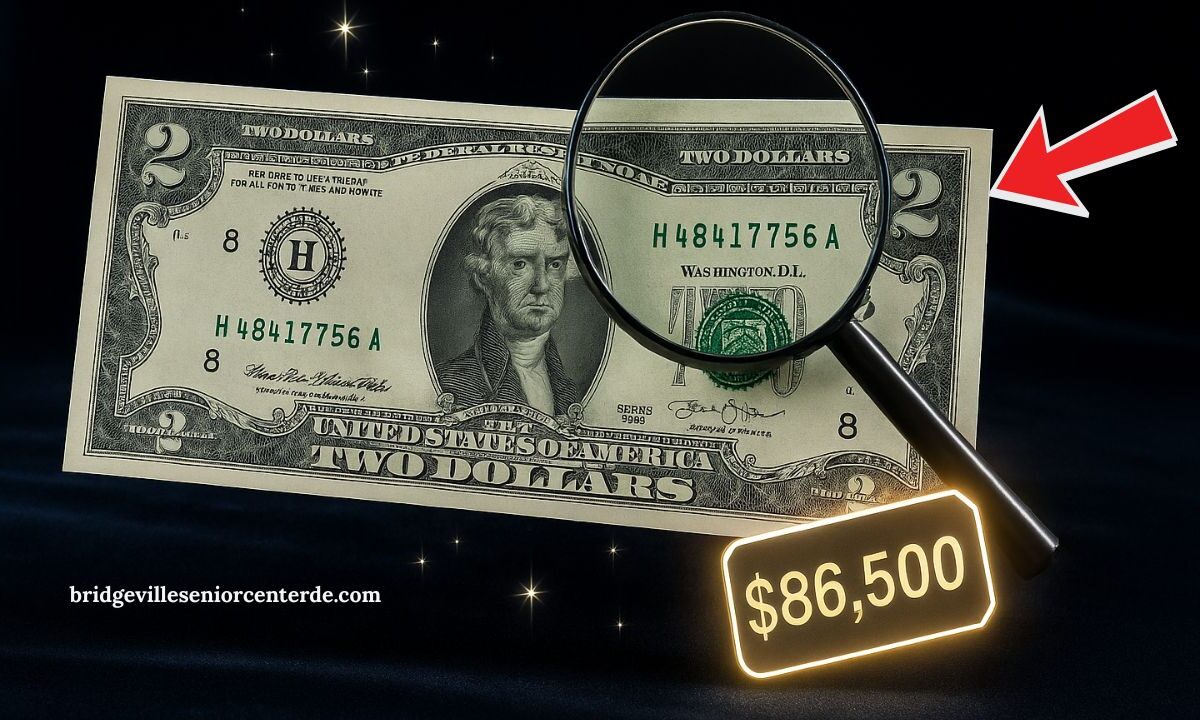In a stunning turn of events, a $2 Bicentennial bill with a rare misprint has fetched $86,500 at a recent auction. While most people overlook these seemingly ordinary notes, collectors and currency experts know that certain errors can skyrocket a bill’s value.
This sale has sparked a renewed interest in old bills still circulating in wallets and drawers across the country. Could you unknowingly be holding a valuable piece of history?
What Is the Bicentennial $2 Bill?
Issued in 1976 to mark America’s 200th birthday, the Bicentennial $2 bill features a portrait of Thomas Jefferson on the front and an engraving of the signing of the Declaration of Independence on the back.
While the note itself is not rare, certain versions of it—especially those with printing errors—are highly collectible and can be worth thousands.
What Made This Bill Worth $86,500?
The recently sold $2 Bicentennial bill stood out due to a notable misprint. These kinds of errors significantly increase a note’s value, especially when the error is rare and the bill is in excellent condition.
Common error types include:
- Mismatched serial numbers
- Double-printed seals or numbers
- Misaligned printing
- Off-center cuts
- Ink smears or bleeds
The more dramatic or unique the error, the more valuable the note becomes.
Auction Details at a Glance
| Feature | Details |
|---|---|
| Bill Type | $2 Bicentennial Note (1976 series) |
| Error Type | Misaligned seal & serial number |
| Condition | Crisp Uncirculated (High Grade) |
| Final Sale Price | $86,500 |
| Estimated Value Range | $20,000 – $90,000 |
| Circulation Status | Still found in public circulation |
This sale is a reminder that even low-denomination bills can carry significant hidden value, especially if they contain recognized errors.
Other Valuable $2 Error Notes
The Bicentennial series has seen several examples of high-value misprints over the years. Some have sold for:
- $55,000 – Due to mismatched serial numbers
- $95,000 – With a rare double-print error
- $10,000–$20,000 – For dramatic off-center cuts or ink bleeds
It’s clear that demand for error currency continues to grow, particularly for well-preserved and authenticated examples.
How to Identify a Valuable Misprint
Not every misprint will make you rich—but some might. Here are signs to look for:
- Serial numbers don’t match on the left and right.
- Treasury seals are off-center or printed over serials.
- The bill is cut unevenly or off-angle.
- There are visible ink smears, ghost images, or double impressions.
Always inspect both sides of the bill carefully and compare to a standard $2 note for any obvious discrepancies.
What Makes Error Notes So Valuable?
Several factors drive the value of these collectible bills:
- Rarity – Fewer examples with the same error mean higher demand.
- Condition – Uncirculated or crisp bills fetch more than worn notes.
- Historical Significance – Bicentennial bills are linked to a major national event.
- Visual Appeal – Bolder, more noticeable errors are more desirable.
Collectors are willing to pay top dollar to acquire unique pieces that are both unusual and in excellent condition.
Still in Circulation: Could You Have One?
Yes—many of these 1976 $2 bills are still legal tender and in circulation. That means it’s entirely possible you could receive one in change at a store, find one in a drawer, or even come across one at a yard sale.
It’s a good time to start checking your bills carefully, especially if you come across any from 1976. Even minor misprints could be worth hundreds—or much more.
Authentication and Selling Tips
- Professional Grading: To get the best value, have your bill graded by a reputable currency grader. High grades can multiply the value.
- Avoid DIY Fixes: Never attempt to clean or flatten your bill. It could ruin its value.
- Use Trusted Auctions: Consider auctioning through recognized currency marketplaces for maximum exposure and price.
The recent sale of a $2 Bicentennial bill for $86,500 proves that not all currency is created equal. While most $2 bills may seem unremarkable, those with misprints and printing errors can be incredibly valuable. With millions of these notes still floating around, the chance of finding one is real.
So, the next time you come across a $2 bill, don’t overlook it. Examine it closely—you might just be holding your own $86,500 treasure.
FAQs
Are all $2 Bicentennial bills valuable?
No, most are worth only face value. However, bills with verified misprints or in excellent condition can be worth thousands.
How do I know if my $2 bill has a misprint?
Look for signs like off-center seals, mismatched serial numbers, or extra ink layers. Compare with a normal bill to spot differences.
Where can I sell a rare $2 bill?
You can sell through currency auctions, collectible dealers, or online platforms—especially if it’s graded and authenticated.

